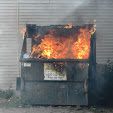In the summer of 2009, the K20D was supplanted at the top of Pentax's DSLR lineup by the new K-7. While it had an APS-C sensor with in-body Shake Reduction and a 14MP resolution just like its predecessor, the new camera was smaller and more rugged, with a magnesium body shell and better cold-weather resistance.
Top shutter speed bumped from 1/4000th to 1/8000th of a second, and it was rated for 100,000 activations.
Like before, there's "TAv" position on the mode dial. This allows you to set your preferred aperture and shutter speed and the camera will automatically adjust ISO to compensate. There's also the "Sv" mode to allow you to use the rear dial to adjust ISO on the fly. The other modes are the same as you'd expect. The top panel LCD can be briefly illuminated blue by rotating the power switch past the "ON" position.
Despite the K-7 being physically smaller than its predecessor, the rear LCD screen has grown from 2.7" on the K20D to a full 3" on the newer camera. This required relocating the vertical stack of buttons that used to live on the left side of the monitor. The relocation was done sensibly, with the playback-mode-only "Play" and "Trash" buttons moving to the upper left, and "Info" and "Menu" moving over to the right with the other menu navigation and activation buttons.
Despite all these improvements, MSRP for the K-7 was $1,150, which was over a hundred bucks cheaper than its forebear, and one of the best deals of the cameras in the category.






















































